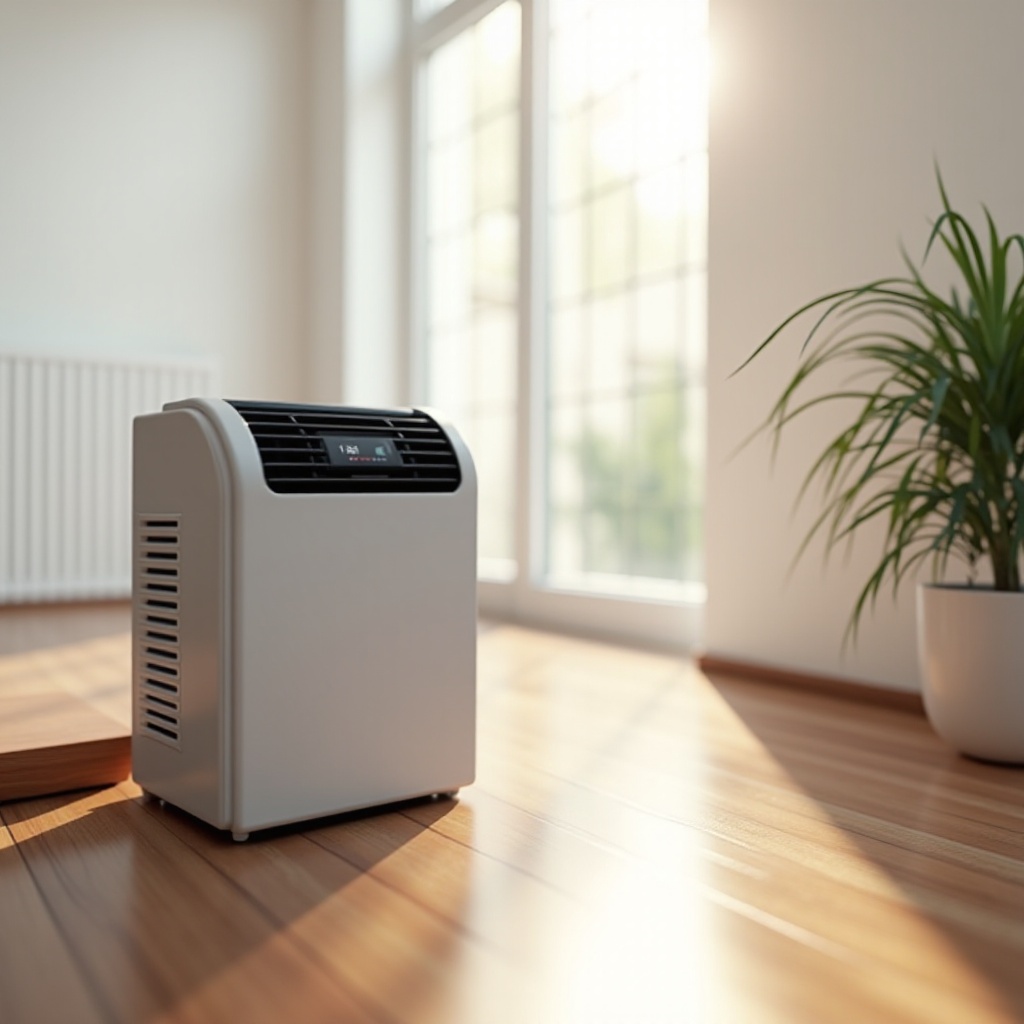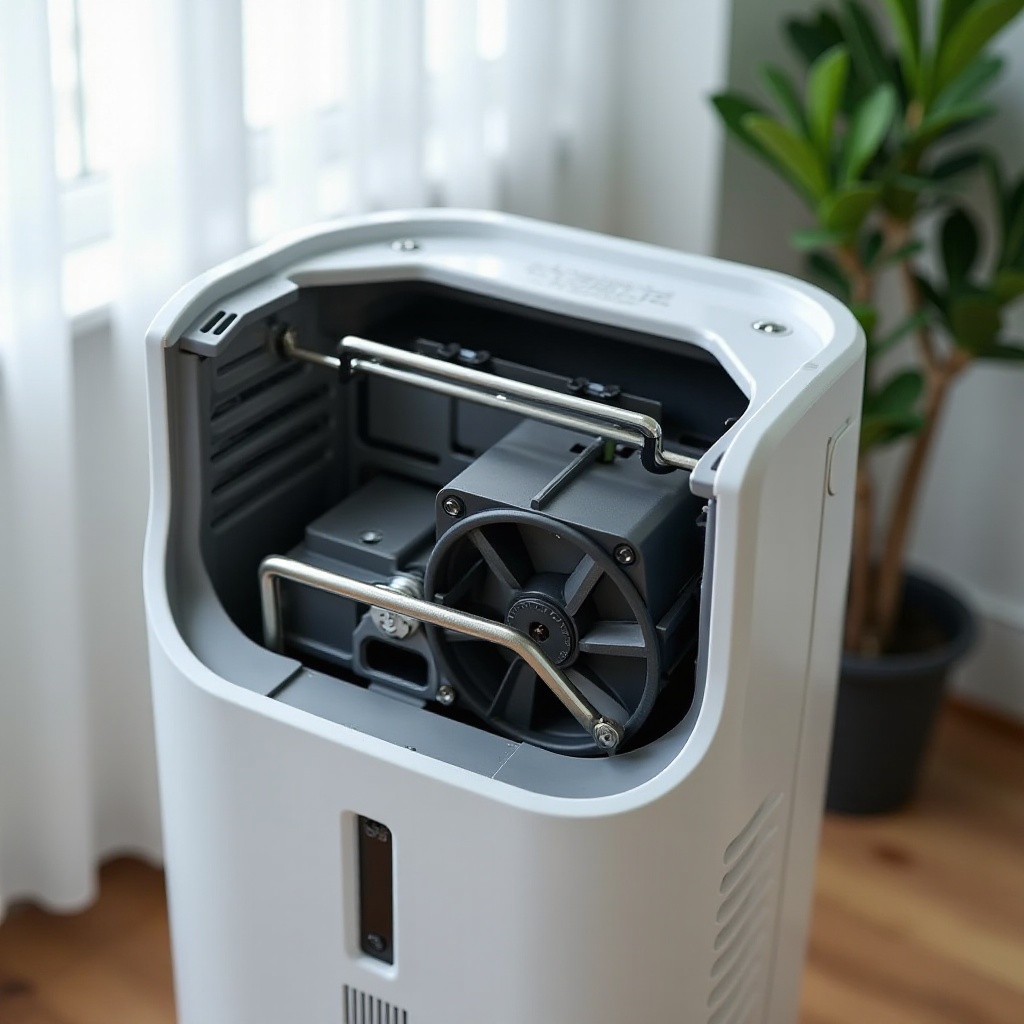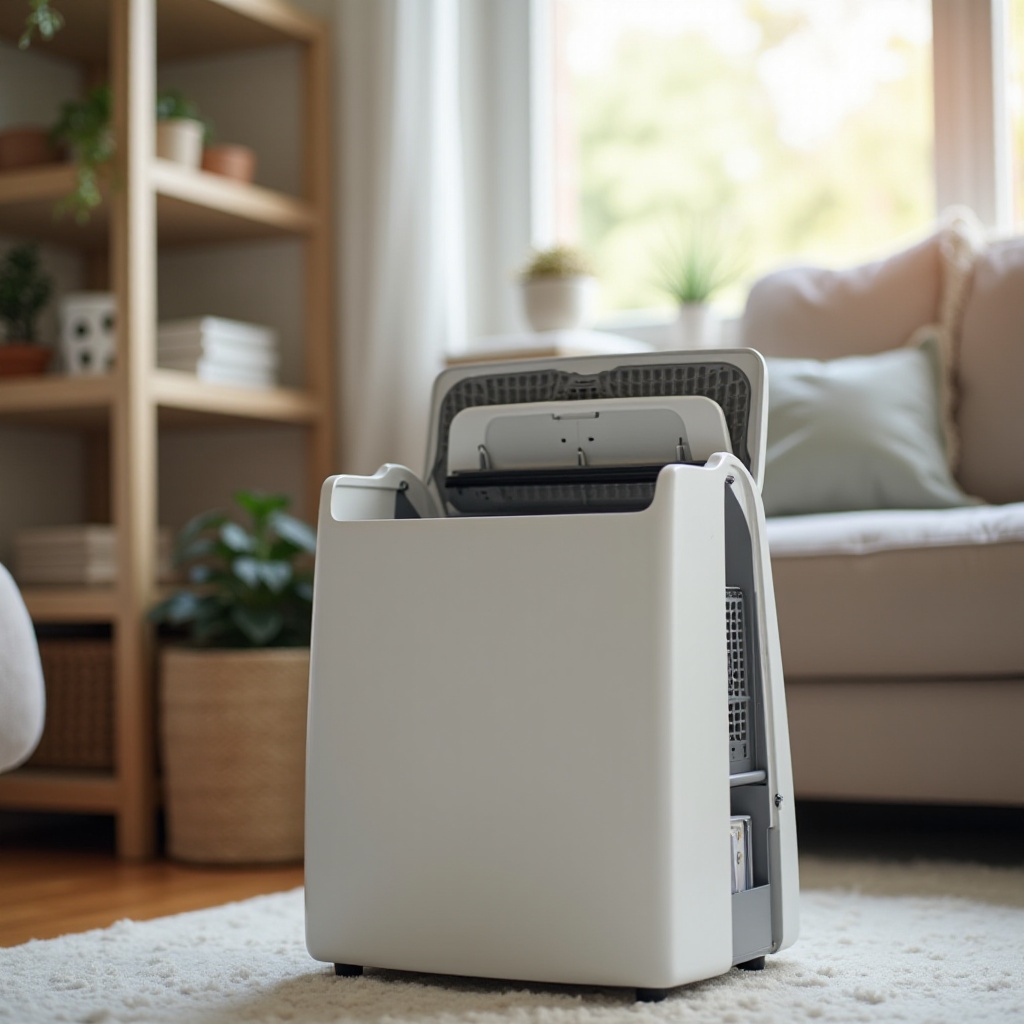Introduction
Portable dehumidifiers are crucial for maintaining a comfortable living space by managing humidity levels. When they function correctly, these devices help prevent mold growth and moisture damage. However, when a dehumidifier starts to underperform or stop working entirely, it's important to address the issues promptly. This guide offers comprehensive solutions to help you troubleshoot and restore the performance of your portable dehumidifier.

Initial Checks and Quick Fixes
Start by performing some basic checks, as these simple solutions might resolve the common problems with your dehumidifier.
Ensure that your dehumidifier is plugged into an operational outlet. Examine the power cable for any signs of damage such as frayed wires or loose connections. Try a different outlet to verify if the power supply is the issue.
Review the control panel for any errors or incorrect settings. Make sure the humidity level is set appropriately to allow the dehumidifier to operate efficiently. Reset the device settings to clear any potential glitches.
Unplug the appliance for a few minutes and then reconnect it. This can reset the system, which might resolve minor software issues, restoring the dehumidifier's functionality.
These initial checks often resolve basic issues. However, if the problem persists, further investigation is needed.
Diagnosing Common Malfunctions
If the quick fixes don't work, it's time to dive deeper into diagnosing what might be wrong. Understanding the root cause can direct you to more effective repair strategies.
Check if the room temperature and humidity levels are optimal for the dehumidifier's operation. Extremely low temperatures can hinder performance, preventing the unit from collecting moisture effectively. Ensure the device has adequate airflow and is used in a suitable environment.
Inspect the water tank for proper placement and verify that it is not full. Occasionally, the float switch might become stuck, causing the device to stop functioning. Clean the tank and check the drainage hose for any blockages that could prevent water from flowing out.
Examine the refrigeration circuit for any faults. A defective circuit affects the coil's temperature regulation. Check for ice build-up or damage on the evaporator and condenser coils, as these can prevent proper moisture condensation. If necessary, defrost the coils or consult a professional for complex repairs.
Understanding these common malfunctions paves the way for regular maintenance to boost efficiency and prolong the appliance's lifespan.
Maintenance and Cleaning Tips
Routine maintenance and cleaning are critical for keeping your dehumidifier running smoothly. These practices can prevent common issues and extend the life of the appliance.
Dirty air filters can prevent sufficient airflow, reducing the device's efficiency. Clean or replace them regularly—ideally every month—to ensure smooth air passage and optimal moisture extraction.
Obstructed vents and grills strain the motor by blocking airflow. Inspect these areas periodically and remove any accumulated dust or debris.
The coils can collect dirt, which inhibits heat exchange and reduces efficiency. Clean the evaporator and condenser coils gently using a vacuum or a soft brush to remove any build-up.
By adhering to a consistent maintenance schedule, you can resolve existing issues and prevent future mechanical failures.
Mechanical Issues and Solutions
When encountering mechanical problems, a thorough inspection and precise repair tactics are vital to restore your dehumidifier's functionality.
Ensure that the fan blades are spinning freely without any obstructions. Listen for any unusual noises that may indicate motor strain or damage. Lubricate moving parts if necessary to maintain smooth operation.
The compressor is crucial for moisture extraction. Check for refrigerant leaks or low levels, as these can affect performance. Addressing such issues typically requires a professional's expertise.
Excessive noise or vibrations can indicate misalignment or worn parts. Tighten any loose screws and replace parts that seem worn to stabilize the unit.
Grasping the nature of these mechanical problems allows you to address many issues without having to replace the entire appliance. However, when repairs no longer make financial sense, it may be time to consider an upgrade.

Deciding Between Repair or Replacement
When contemplating repairs or replacement, consider the age and condition of your dehumidifier alongside the repair costs.
Analyze the damage extent and part replacement expenses. If repair costs are approaching the cost of a new unit, it may be wiser to replace the dehumidifier.
Upgrading to a newer model can present benefits like improved efficiency and enhanced features. If your current unit is outdated, a new dehumidifier may offer better performance and energy savings.
By weighing the costs against the benefits of a new unit, you can make an informed decision that suits your needs and budget.

Conclusion
Troubleshooting a portable dehumidifier that is not working involves systematic approaches and consistent maintenance. From basic checks to diagnosing mechanical issues, each step reinstitutes functionality and ensures smooth operation. Prioritize preventive maintenance to avoid recurring problems and extend the life of your appliance.
Frequently Asked Questions
What should I do if my dehumidifier is running but not collecting water?
Check the room's humidity level, inspect for drainage clogs, and ensure the coils are functioning properly.
How often should I clean my portable dehumidifier?
To maintain efficiency, check and clean the device monthly, focusing on filters, coils, and ventilations.
Is professional repair worth it for an older dehumidifier model?
Consider repair if the costs are manageable compared to replacing with a newer, more efficient model.
